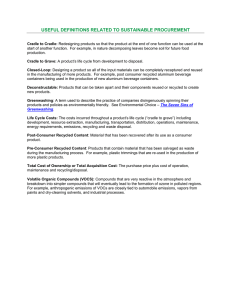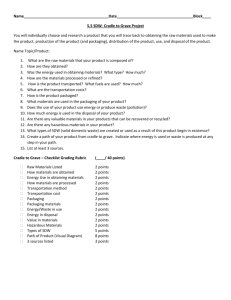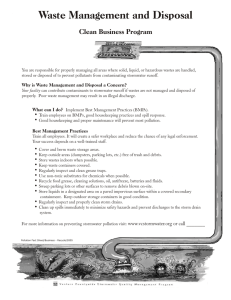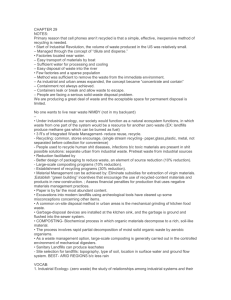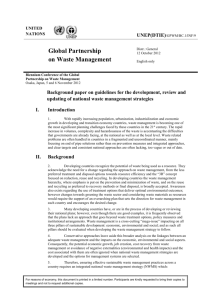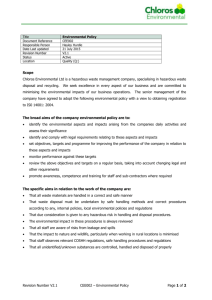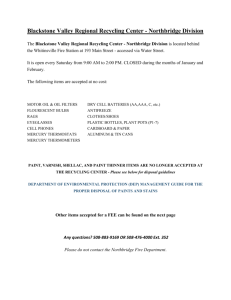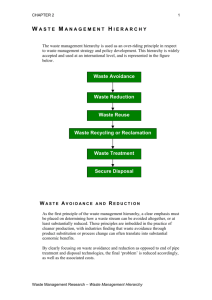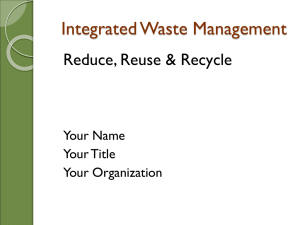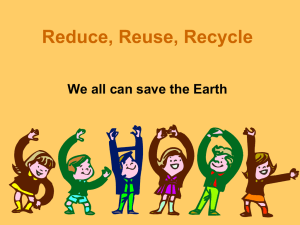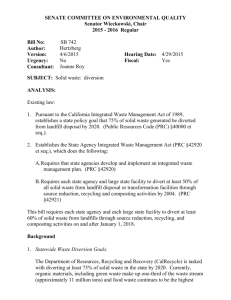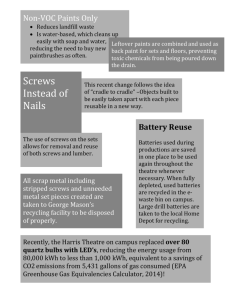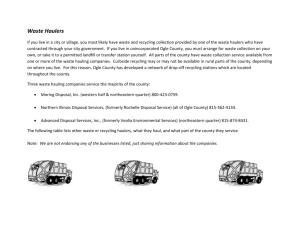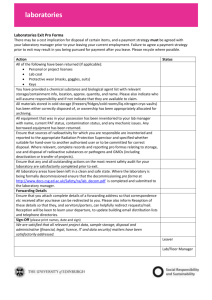sustainable materials definitions - Zoe-s-wiki
advertisement
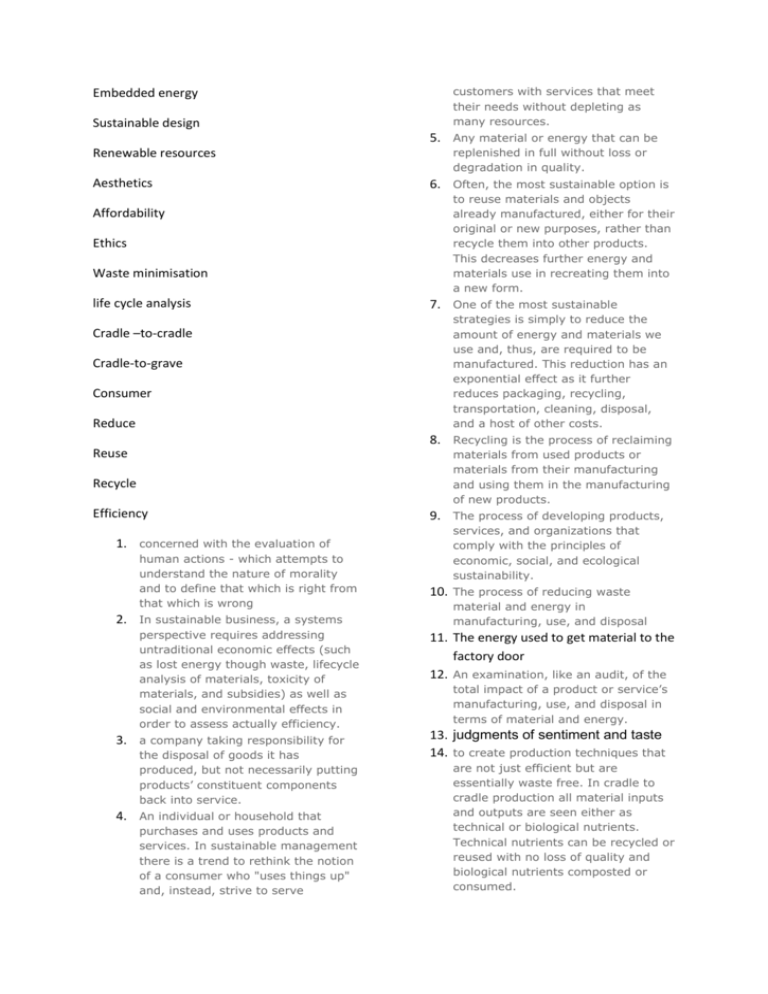
Embedded energy Sustainable design customers with services that meet their needs without depleting as many resources. 5. Any material or energy that can be Renewable resources Aesthetics Affordability Ethics Waste minimisation life cycle analysis Cradle –to-cradle Cradle-to-grave Consumer Reduce replenished in full without loss or degradation in quality. 6. Often, the most sustainable option is to reuse materials and objects already manufactured, either for their original or new purposes, rather than recycle them into other products. This decreases further energy and materials use in recreating them into a new form. 7. One of the most sustainable strategies is simply to reduce the amount of energy and materials we use and, thus, are required to be manufactured. This reduction has an exponential effect as it further reduces packaging, recycling, transportation, cleaning, disposal, and a host of other costs. 8. Recycling is the process of reclaiming Reuse materials from used products or materials from their manufacturing and using them in the manufacturing of new products. Recycle Efficiency 1. concerned with the evaluation of human actions - which attempts to understand the nature of morality and to define that which is right from that which is wrong 2. In sustainable business, a systems perspective requires addressing untraditional economic effects (such as lost energy though waste, lifecycle analysis of materials, toxicity of materials, and subsidies) as well as social and environmental effects in order to assess actually efficiency. 3. a company taking responsibility for the disposal of goods it has produced, but not necessarily putting products’ constituent components back into service. 4. An individual or household that purchases and uses products and services. In sustainable management there is a trend to rethink the notion of a consumer who "uses things up" and, instead, strive to serve 9. The process of developing products, services, and organizations that comply with the principles of economic, social, and ecological sustainability. 10. The process of reducing waste material and energy in manufacturing, use, and disposal 11. The energy used to get material to the factory door 12. An examination, like an audit, of the total impact of a product or service’s manufacturing, use, and disposal in terms of material and energy. 13. judgments of sentiment and taste 14. to create production techniques that are not just efficient but are essentially waste free. In cradle to cradle production all material inputs and outputs are seen either as technical or biological nutrients. Technical nutrients can be recycled or reused with no loss of quality and biological nutrients composted or consumed.



